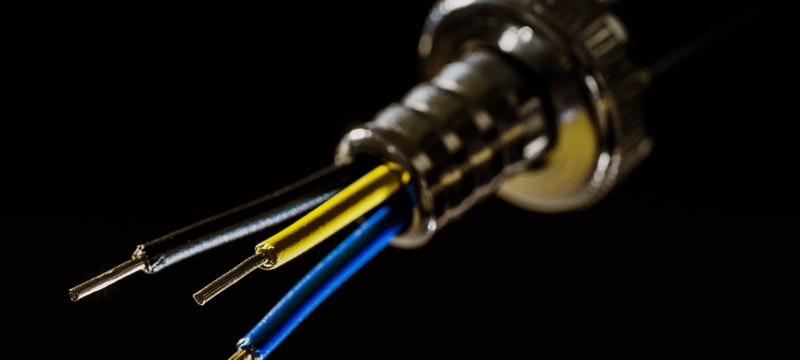Electrical work has come a long way throughout the years with advancements in Electrical Systems and Electrical Tools. A well-designed, modern electrical system is pre-planned, well-contained, and attached to an electrical panel that is designed to properly handle the current for each area of the home. Older electrical systems do not have the safeguards that are required by today’s electrical codes.
This information is designed to give the reader a good idea of some of the issues they may see when dealing with the electrical system in older homes. It is in no way a substitute for or a reason to ignore the National Electric Code or your local electrical code requirements. Always follow code requirements for your area when doing electrical work of any kind.
Old Wiring Techniques
Knob and tube wiring was one of the earliest techniques to provide power throughout the home. It was very popular because it was initially safe, simple, and provided much-needed power for ever-increasing needs of the time. There was no junction box, all connections were soldered and taped so they were strong, but they were not centrally located.
Another issue was that the insulation used on the wiring was rubber, so it dry rots with age and becomes brittle over time. While this can create a fire hazard under certain circumstances, it doesn’t always lead to a dangerous situation due to the installation method of knob and tube wiring. The installation method, the tools, and supplies used for knob and tube wiring helped ensure that they would withstand many years of use.
These potential problems can combine to create a dangerous situation for the owners of older homes. The biggest risk, of course, is fire because when anything comes into contact with naked wiring, it creates a fire risk. Homeowners who use blow in insulation or add layers of insulation to increase the efficiency of their home inadvertently created a potentially hazardous situation. Ideally, knob and tube wiring should be replaced to bring the home up to code.
Ripping it out and starting over isn’t the absolute answer to the potential issues surrounding knob and tube wiring, however. Some of the oldest homes still have knob and tube wiring, and they’re just fine. Circumstances differ from home to home and every homeowner and electrician has to make the decision to leave it or replace it.
Knob and tube wiring does have its good points as well. It was likely installed by craftsmen who took great pride in their trade in the mid-to-late 1800s and early 1900s. They used ceramic tubes that will outlast most of today’s modern structures. It is actually more heat resistant than equivalent modern types of wire because the conductors are separated by a gap of air. If the insulation on the wires breaks away there’s very little likelihood that the wires will ever touch because the ceramic tubes hold them apart.
Patches, Splices, and Additions
Homes change size and shape throughout the years as the owners add new rooms and remodel the interior of the home. Some DIY handymen jump into a big remodeling project and do an amazing job adding in new electrical outlets, adding new ductwork, and creating a wonderfully finished addition. The problems arise when the new lighting and new outlets create too much strain on the electrical panel. The addition of a single outlet probably won’t hurt anything, but the addition of multiple outlets throughout the years probably will.
Patches and splices also happen over time as things go wrong and are repaired. Remember, electrical tape is great for patching things up, but it’s a temporary solution to problems that can continue to crop up over time. Don’t overuse electrical tape or expect it to be a long-lasting fix. Repair old patches and splices correctly so you’re sure it’s a job well-done.
Multi-Metal Wiring
A rise in copper prices created the need to find lower-cost alternatives for wiring during the 1960s and 1970s. That lower priced alternative was aluminum, which was fine for use as electrical wiring, but it caused problems when aluminum and copper had to create a connection. The best way to combat the potential for electrical fire due to mix-matched wiring is to inspect the entire system and ensure that it is copper.
Avoid Fire Hazards
The best way to avoid electrical problems in an older home is to work with a professional electrician or an experienced DIY handyman to ensure that the electrical system is up to snuff. Making sure the electrical system is up to code will not guarantee that the home will forever be safe from electrical fires, but it will put several safeguards into place.




